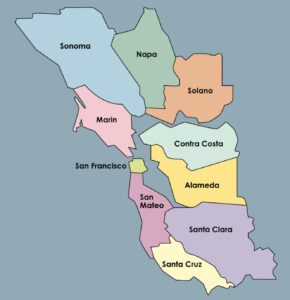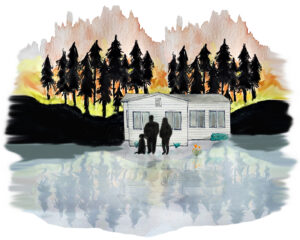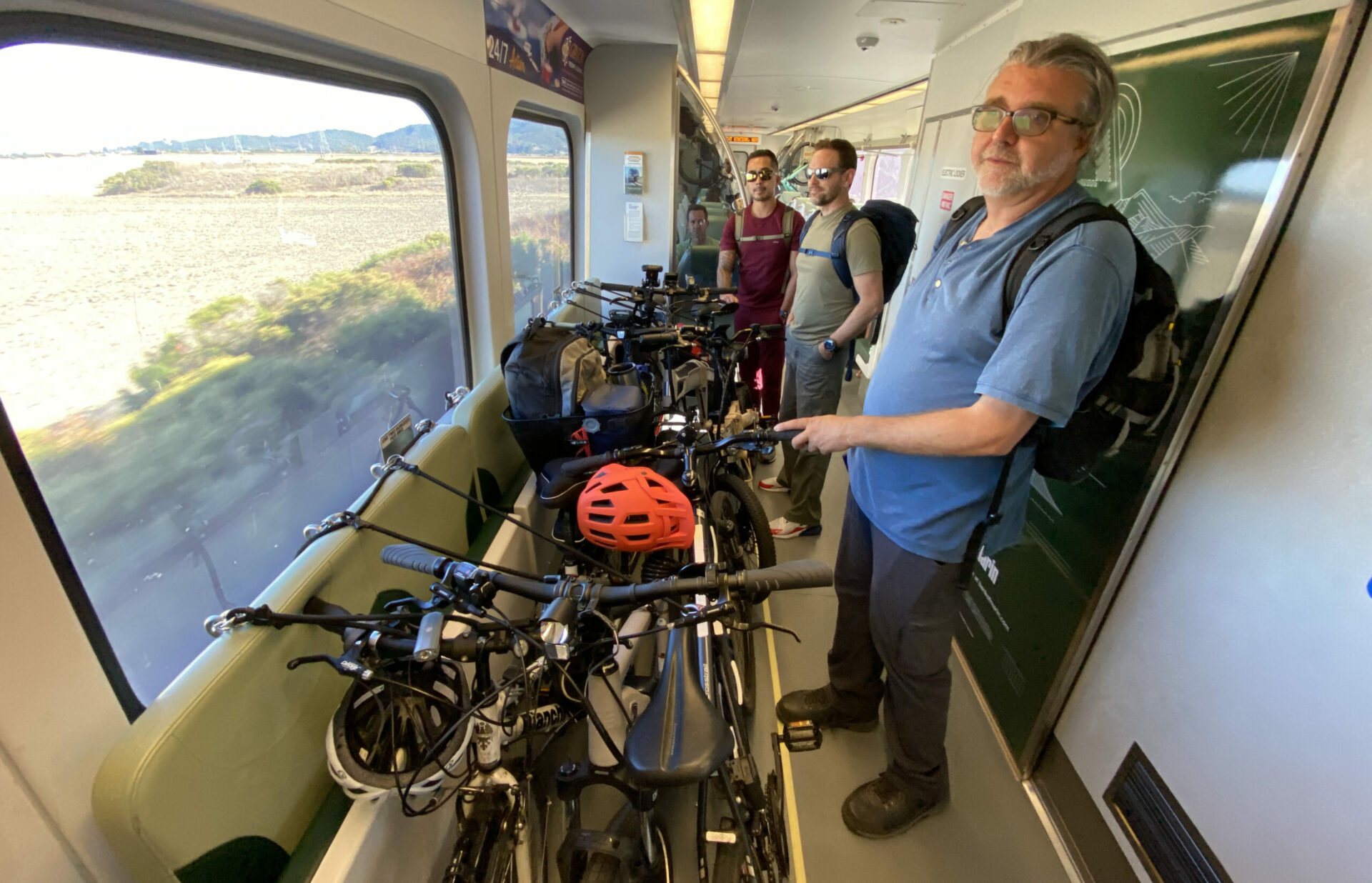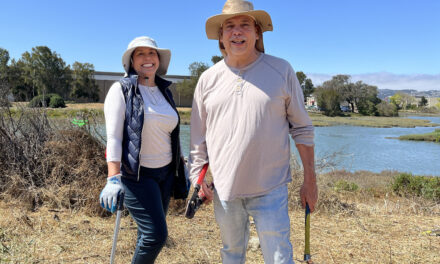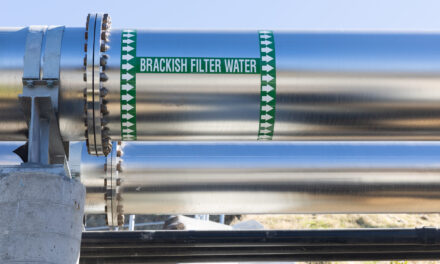Rail Line Reinvents Itself After Pandemic Slump
Photo: SMART
The Sonoma-Marin Area Rail Transit (SMART) system, which runs from Larkspur to the Sonoma County Airport, had a banner year in 2023. The rail transported over 750,000 passengers in 2023 and earned over half a million dollars in fare revenue, beating its 2018 pre-pandemic numbers.
“Since the pandemic, it’s been very challenging for transit agencies to recover from work from home patterns,” says Julia Gonzalez, who works for SMART’s marketing team. “But because we’re a small, agile agency, we’ve been able to experiment with new programs to try and diversify our ridership.”
While there are fewer commuters during peak hours, SMART has pivoted towards helping North Bay residents run midday errands, plan weekend hiking trips, and leave their cars behind. Gonzalez notes that Sonoma’s bike culture has a lot to do with it. The agency removed seats to create more bike-friendly carriages, and now about 15% of SMART’s ridership brings bicycles on the train. “Our bike pathway runs alongside the rail alignment, separate from traffic, and allows people to finish the first and last mile of their trips” she explains. In addition, the agency is offering free rides to all youth passengers until July 2025 to encourage them to use the service to commute to and from school.
Photo: SMART
Gonzalez hopes that diversifying its ridership will act as a boon for eco-conscious public transit advocates. According to a SMART fact sheet, SMART riders have a 33% smaller carbon footprint than their car-bound counterparts; from 2017 to 2020, they collectively prevented 8.1 million pounds of carbon dioxide emissions. “Our community really does prioritize protecting our green space and limiting our impact on climate change. In 2008, North Bay voters approved a quarter-cent sales tax measure to fund SMART, and that tax revenue is our largest source of revenue,” says Gonzalez.
Though the tax expires in 2029 – a proposed 30-year extension failed to capture the requisite supermajority vote on the 2020 ballot – SMART continues to seek grant funding to extend its railway through Windsor, Healdsburg, and Cloversdale. “We took almost 16 million vehicle miles off the road last year,” boasts Gonzalez. “If our ridership continues to grow, we can use the data to prove that public transit is a truly sustainable alternative to individual car use.”
Other Recent Posts
Gleaning in the Giving Season
The practice of collecting food left behind in fields after the harvest is good for the environment and gives more people access to produce.
New Study Teases Out Seawall Impacts
New models suggest that sea walls and levees provide protection against flooding and rising seas with little effect on surrounding areas.
Oakland High Schoolers Sample Local Kayaking
The Oakland Goes Outdoors program gives low-income students a chance to kayak, hike, and camp.
Growing Better Tomatoes with Less Water
UC Santa Cruz researchers find the highly-desired ‘Early Girl’ variety yields more tomatoes under dry-farmed conditions.
Santa Clara Helps Homeless Out of Harm’s Way
A year after adopting a controversial camping ban, Valley Water is trying to move unsheltered people out of the cold and rain.
The Race Against Runoff
San Francisco redesigns drains, parks, permeable pavements and buildings to keep stormwater out of the Bay and build flood resilience.
Learning the Art of Burning to Prevent Wildfire
In Santa Rosa’s Pepperwood Preserve, volunteers are learning how controlled fires can clear out natural wildfire fuel before it can spark.
Martinez Residents Want More Than Apologies — They Want Protection
After a 2022 release of toxic dust and a February 2025 fire, people in the northeast Bay town are tired of waiting for safety improvements.
Weaving Fire Protection Out Of What’s Already There
A new Greenbelt Alliance report shows how existing vineyards, grasslands, and managed forests can slow wildfire and save vulnerable homes.
Fall Plantings Build Pollinator Habitats in Concord
Community groups, climate advocates and a church are coming together to plant pollinator gardens as monarchs, bees see population declines.

